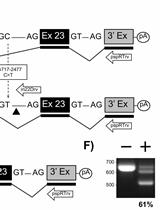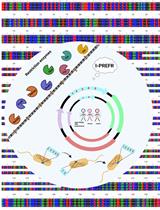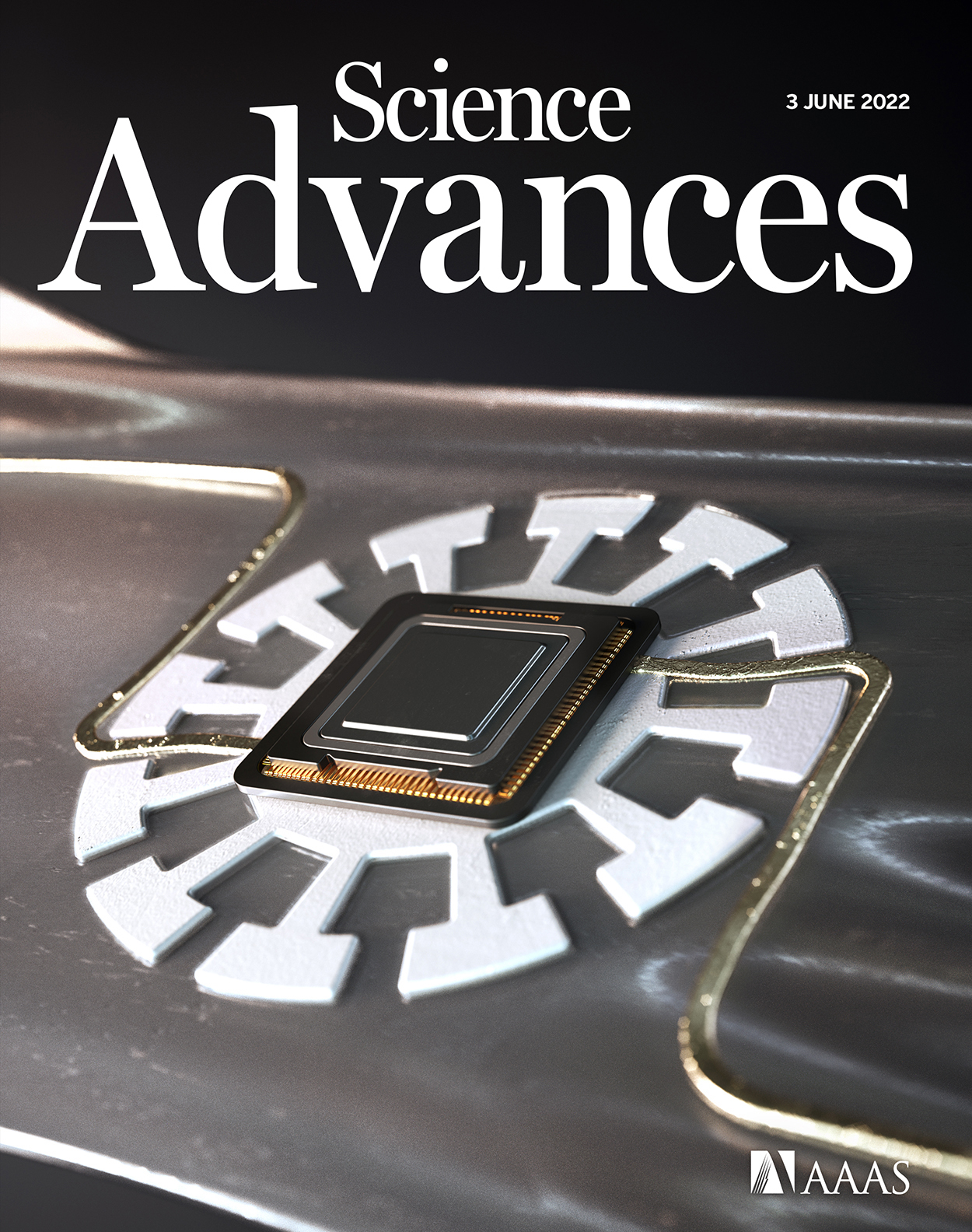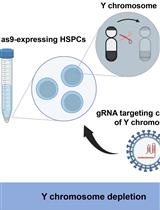- EN - English
- CN - 中文
Application of a Spacer-nick Gene-targeting Approach to Repair Disease-causing Mutations with Increased Safety
应用 "间隔符 "基因定向方法以修复致病突变并提高安全性
(*contributed equally to this work) 发布: 2023年04月20日第13卷第8期 DOI: 10.21769/BioProtoc.4661 浏览次数: 2071
评审: David PaulDr. Amit K. TripathiAnonymous reviewer(s)

相关实验方案

Minigene技术评估会导致人细胞产生异常剪切的基于CRISPR/Cas9 的内含子突变切除
David J. Sanz and Patrick T. Harrison
2019年06月05日 6885 阅读

I-PREFR:基于反向PCR的无酶单向策略,利用自杀载体在细菌中快速实现无标记染色体基因缺失与重建
Rekha Rana [...] Prabhu B. Patil
2025年05月20日 2246 阅读
Abstract
The CRISPR/Cas9 system is a powerful tool for gene repair that holds great potential for gene therapy to cure monogenic diseases. Despite intensive improvement, the safety of this system remains a major clinical concern. In contrast to Cas9 nuclease, Cas9 nickases with a pair of short-distance (38–68 bp) PAM-out single-guide RNAs (sgRNAs) preserve gene repair efficiency while strongly reducing off-target effects. However, this approach still leads to efficient unwanted on-target mutations that may cause tumorigenesis or abnormal hematopoiesis. We establish a precise and safe spacer-nick gene repair approach that combines Cas9D10A nickase with a pair of PAM-out sgRNAs at a distance of 200–350 bp. In combination with adeno-associated virus (AAV) serotype 6 donor templates, this approach leads to efficient gene repair with minimal unintended on- and off-target mutations in human hematopoietic stem and progenitor cells (HSPCs). Here, we provide detailed protocols to use the spacer-nick approach for gene repair and to assess the safety of this system in human HSPCs. The spacer-nick approach enables efficient gene correction for repair of disease-causing mutations with increased safety and suitability for gene therapy.
Graphical overview

Background
In the CRISPR/Cas9 system, a single-guide RNA (sgRNA)-directed Cas9 nuclease introduces double-strand breaks (DSBs) at the target region. DSBs are predominantly repaired by the non-homologous end joining (NHEJ) pathway, causing micro-insertions or deletions (indels or unwanted on-target mutations). If a DNA donor template with 5′ and 3′ homology arms (HAs) is provided, the homology-directed repair (HDR) pathway is activated to precisely replace the mutated DNA sequence (Cong et al., 2013; Hsu et al., 2013; Mali et al., 2013b; Chu et al., 2015). Although the CRISPR/Cas9 system succeeded in repairing mutations, its undesired on-target mutations and potential off-target activities are still a major concern (Cradick et al., 2013; Frock et al., 2015; Fu et al., 2013; Pattanayak et al., 2013; Tsai et al., 2015). The target specificity of CRISPR/Cas9 has been increased by using truncated sgRNAs or extended sgRNAs with two additional G nucleotides at the 5′ end (Cho et al., 2014; Fu et al., 2014; Tsai et al., 2015), sgRNAs with high specificity (Akcakaya et al., 2018), or high-fidelity SpCas9 mutants (Kleinstiver et al., 2016; Slaymaker et al., 2016; Vakulskas et al., 2018). A nickase, a mutated version of Cas9, can be generated by introducing a D10A or H840A mutation to RuvC (E. coli protein that is an endonuclease) or HNH (histidine-asparagine-histidine motif) nuclease domain, respectively (Jinek et al., 2012; Nishimasu et al., 2014). A sgRNA-guided Cas9 nickase introduces a nick at the target sequence, generating a single-stranded break that is perfectly repaired by the nonmutagenic base excision repair pathway (Dianov and Hubscher, 2013). As a result, Cas9 nickase creates less indels than the Cas9 nuclease. In combination with a pair of PAM-out (facing away from each other) sgRNAs at a short distance of 38–68 bp, the Cas9D10A nickase generates offset double nicks that convert into site-specific DSBs. This approach led to efficient HDR- and NHEJ-mediated on-target events, while reducing off-target effects by 50–1,000-fold (Ran et al., 2013; Mali et al., 2013a). The limitation of this approach is that DSBs are still induced at the target sequence, leading to frequent indels and nonsense mutations in the target gene (Ran et al., 2013; Miyaoka et al., 2016).
Recently, we described a spacer-nick system that combines Cas9D10A nickase with a pair of PAM-out sgRNAs at a long distance of 200–350 bp. In combination with adeno-associated virus (AAV) serotype 6 donor template delivery, the spacer-nick-based gene repair approach preserves efficient gene correction and minimizes adverse effects, such as unintended NHEJ-mediated on-target mutations and unwanted off-target genetic alterations in human hematopoietic stem and progenitor cells (HSPCs) (Tran et al., 2022). Additionally, we detailed modified GUIDE-seq and linear amplification high-throughput genome-wide translocation sequencing (LAM-HTGTS) methods to quantify genome-wide off-target mutations and capture all possible gene editing outcomes induced by sgRNA-guided nucleases in human HSPCs. The GUIDE-seq method is based on the integration of a blunt-end double-stranded (ds) oligodeoxynucleotide (dsODN) into the nuclease-induced DSBs and requires a large cell number (Tsai et al., 2015). To overcome this limitation and simplify this method to wet lab workflow, we modified it using Tn5 transposase to tagment genomic DNA and insert universal sequencing adapters into both ends of tagmented DNA fragments, allowing for an amplification of dsODN tags with specific primers (termed Tn5-mediated GUIDE-seq). Moreover, we modified the original HTGTS method previously described (Hu et al., 2016). This modification is based on linear amplification of primers outside of HAs and leads to a 5′- and 3′-based sequencing of the target region, allowing for a quantification of indels and deletion, AAV integrations, inversions, HDR, and translocations. Overall, we provide detailed step-by-step protocols for spacer-nick-mediated gene repair and off-target assessment in human HSPCs.
Materials and Reagents
Pipette filter tips [Sarstedt, catalog numbers: 70.3010.275 (10 μL), 70.3030.265 (20 μL), 70.3030.375 (100 μL), 70.3030.110 (200 μL), 70.3060.275 (1,000 μL)]
1.5 mL tubes (Eppendorf, catalog number: 0030 120.086)
2.0 mL tubes (Eppendorf, catalog number: 0030 120.094)
200 μL PCR plates (Sarstedt, catalog number: 72.1980.202)
200 μL PCR tubes (Neolab, catalog number: 7-5207)
Agarose (Biozym, catalog number: 840004)
100 bp DNA ladder (Thermo Fisher, catalog number: 5628019)
GeneRuler 1 kb Plus DNA ladder (Thermo Fisher, catalog number: SM1331)
AMPure XP beads (Beckman Coulter, catalog number: A63881)
DynabeadsTM MyONETM Streptavidin C1 (Thermo Fisher, catalog number: 65001)
Nuclease-free water (Sigma, catalog number: 3098)
Ethanol (Carl Roth, catalog number: P075.1)
Tris (Carl Roth, catalog number: 5429.2)
HCl (Carl Roth, catalog number: 9277.2)
NaOH (Carl Roth, catalog number: P031.2)
EDTA·2H2O (Carl Roth, catalog number: 8043.3)
NaCl (Carl Roth, catalog number: 3957.4)
PEG 8000 (Sigma, catalog number: 89510-250G-F)
Human CD34+ microbead kit (Miltenyi Biotec, catalog number: 130-046-702)
Ficoll-Paque Plus (GE Healthcare, catalog number: 17144002)
Serum-free StemSpanTM SFEM II medium (Stemcell, catalog number: 09655)
Human SCF (PeproTech, catalog number: 300-07)
Human TPO (PeproTech, catalog number: 300-18)
Human FLT3L (PeproTech, catalog number: 300-19)
Human IL-6 (PeproTech, catalog number: 200-06)
UM171 (Stemcell, catalog number: 72912)
StemRegenin 1 (SR1) (Stemcell, catalog number: 72342)
AAV6 system (Cell Biolabs, catalog number: VPK-410-SER6)
Fastdigest NotI (Thermo Fisher, catalog number: FD0593)
CrRNAs (IDT)
Alt-R® CRISPR-Cas9 tracrRNA (IDT, catalog number: 1072534)
Alt-R® S.p. Cas9D10A nickase V3 (IDT, catalog number: 1081063)
P3 primary cell 4D-NucleofectorTM X kit L (Lonza, catalog number: V4XP-3012)
Dead cell removal kit (Miltenyi Biotec, catalog number: 130-090-101)
KOD hot-start DNA polymerase (Merck Millipore, catalog number: 71085)
NucleoSpin Gel and PCR Cleanup (Macherey-Nagel, catalog number: 740609.50)
NucleoBond Xtra Maxi kit (Macherey-Nagel, catalog number: 740414.50)
GenFind V3 reagent kit (Beckman Coulter, catalog number: C34880)
Illumina Tagment DNA TDE1 Enzyme and Buffer kits (Illumina, catalog number: 20034197)
Zymo DNA clean and concentrator-5 (Zymo research, catalog number: D4003)
PrimeSTAR GXL polymerase (Takara, catalog number: R050B)
QubitTM dsDNA HS assay kit (Thermo Fisher, catalog number: Q32851)
High sensitivity D1000 ScreenTape assay (Agilent, catalog number: 5067)
QIAquick Gel Extraction kit (Qiagen, catalog number: 28704)
T4 DNA ligase (NEB, catalog number: M0202)
Hexaamminecobalt(III) chloride (HexCo) (Sigma, catalog number: 481521-25G)
Serum-free freezing medium BAMBANKER (Nippon Genetics, catalog number: 5802)
Phosphate-buffered saline (PBS) (Thermo Fisher, catalog number: 20012027)
Platinum Taq polymerase (Thermo Fisher, catalog number: 15966005)
Nextera XT index kit v2 set A (Illumina, catalog number: FC-131-2001)
5 M Tetramethylammonium chloride solution (TMAC) (Sigma, catalog number: T3411-500ML)
Gel Loading Dye, Orange (6×) (NEB, catalog number: B7022S)
Q5 High-fidelity DNA polymerase (NEB, catalog number: M0491S)
Wizard Genomic DNA purification kit (Promega, catalog number: A1120)
ProNex size-selective purification beads (Promega, catalog number: NG2001)
High sensitivity DNA BioAnalyzer kit (Agilent, catalog number: 5067-4626)
TOP10 bacteria (Invitrogen, catalog number: C404003)
LB agar, powder (Invitrogen, catalog number: 22700025)
Carbenicillin (Sigma, catalog number: C1613-1ML)
T4 DNA ligase (NEB, catalog number: M0202M)
P3 Primary Cell electroporation buffer (see Recipes)
Completed serum-free StemSpanTM SFEM II medium (see Recipes)
70% ethanol (see Recipes)
50% (w/v) PEG 8000 (see Recipes)
5 M NaCl (see Recipes)
2.5 N NaOH (see Recipes)
0.5 M EDTA (see Recipes)
1 M Tris-HCl (pH 7.4) (see Recipes)
1 M Tris-HCl (pH 8.0) (see Recipes)
1× TE buffer (pH 8.0) (see Recipes)
B&W buffer (see Recipes)
20 mM hexaamminecobalt(III) chloride (see Recipes)
50 mM bridge adapter (see Recipes)
Forward and reverse oligos of dsODN (IDT) (Table 1)
Primers (Eurofins) (Table 1)
Table 1. Oligos and primers
Name Sequence dsODN-forward 5′-P-G*T*TTAATTGAGTTGTCATATGTTAATAACGGT*A*T-3′ dsODN-reverse 5′-P-A*T*ACCGTTATTAACATATGACAACTCAATTAA*A*C-3′ I5-Nextera-3′-GSP (-) TCGTCGGCAGCGTCAGATGTGTATAAGAGACAGGTTTAATTGAGTTGTCATATGTTAATAACGGT I5-Nextera-5′-GSP (+) TCGTCGGCAGCGTCAGATGTGTATAAGAGACAGATACCGTTATTAACATATGACAACTCAATTAA I7-Nextera-reverse GTCTCGTGGGCTCGGAGATGTGTATAAG Bridge-lower GCGACTATAGGGCACGCGTGGNNNNNN[AmC3] Bridge-upper [Phos]CCACGCGTGCCCTATAGTCGC[AmC3] U2-C-Adapter GTCTCGTGGGCTCGGAGATGTGTATAAGAGACAGNNNNNGACTATAGGGCACGCGTGG U1-C-GeneSpecific TCGTCGGCAGCGTCAGATGTGTATAAGAGACAGNNNNN[GeneSpecific] FC1-i5-U1 (N501) AATGATACGGCGACCACCGAGATCTACAC tagatcgc TCGTCGGCAGCGTC FC2-i7-U2 (N701) CAAGCAGAAGACGGCATACGAGAT tcgcctta GTCTCGTGGGCTCGG
Equipment
96-well magnet stand (Thermo Fisher, catalog number: AM10027)
6-well magnet stand (Cytiva, catalog number: 28948964)
Tissue culture 6-well plates (Sarstedt, catalog number: 83.3920)
Tissue culture 12-well plates (Sarstedt, catalog number: 83.3921)
Freezing vials (Sarstedt, catalog number: 72.380.992)
16-well nucleocuvette strip (Lonza, catalog number: V4XP-3032)
Lonza 4D-Nucleofector (Lonza, catalog number: AAF-1003B)
Pipettes (Gilson)
Multichannel pipettes (Eppendorf)
PCR thermocycler (Eppendorf, catalog number: 6331000017)
NanoDrop (Thermo Fisher)
Thermomixer (Eppendorf)
Vortexer (Scientific Industries)
Centrifuge (Eppendorf)
Tissue culture incubator set at 37 °C, 5% CO2 (Binder)
TapeStation (Agilent, catalog number: G2991BA)
Qubit 2.0 fluorometer (Invitrogen, catalog number: Q32866)
ChemiDoc XRS gel imaging system (Bio-Rad)
Standard UV transilluminator (Cleaver Scientific)
TC20 automated cell counter (Bio-Rad, catalog number: 1450102)
Tube roller (Starlab, catalog number: N2400-7010)
2100 BioAnalyzer instrument (Agilent, catalog number: G2939BA)
Software
CrispRGold (the MDC, https://crisprgold.mdc-berlin.de)
R 4.0.3 programming language (R-project, https://www.r-project.org/)
R-studio integrated development environment (R-studio, https://www.rstudio.com/)
GelAnalyzer 19.1 gel densitometry software (GelAnalyzer, http://www.gelanalyzer.com/?i=1)
Procedure
文章信息
版权信息
© 2023 The Author(s); This is an open access article under the CC BY license (https://creativecommons.org/licenses/by/4.0/).
如何引用
Readers should cite both the Bio-protocol article and the original research article where this protocol was used:
- Tran, N. T., Lebedin, M., Danner, E., Kühn, R., Rajewsky, K. and Chu, V. T. (2023). Application of a Spacer-nick Gene-targeting Approach to Repair Disease-causing Mutations with Increased Safety. Bio-protocol 13(8): e4661. DOI: 10.21769/BioProtoc.4661.
- Tran, N. T., Danner, E., Li, X., Graf, R., Lebedin, M., de la Rosa, K., Kuhn, R., Rajewsky, K. and Chu, V. T. (2022). Precise CRISPR-Cas-mediated gene repair with minimal off-target and unintended on-target mutations in human hematopoietic stem cells. Sci Adv 8(22): eabm9106.
分类
分子生物学 > DNA > 染色体工程
生物工程 > 生物医学工程
您对这篇实验方法有问题吗?
在此处发布您的问题,我们将邀请本文作者来回答。同时,我们会将您的问题发布到Bio-protocol Exchange,以便寻求社区成员的帮助。
Share
Bluesky
X
Copy link










